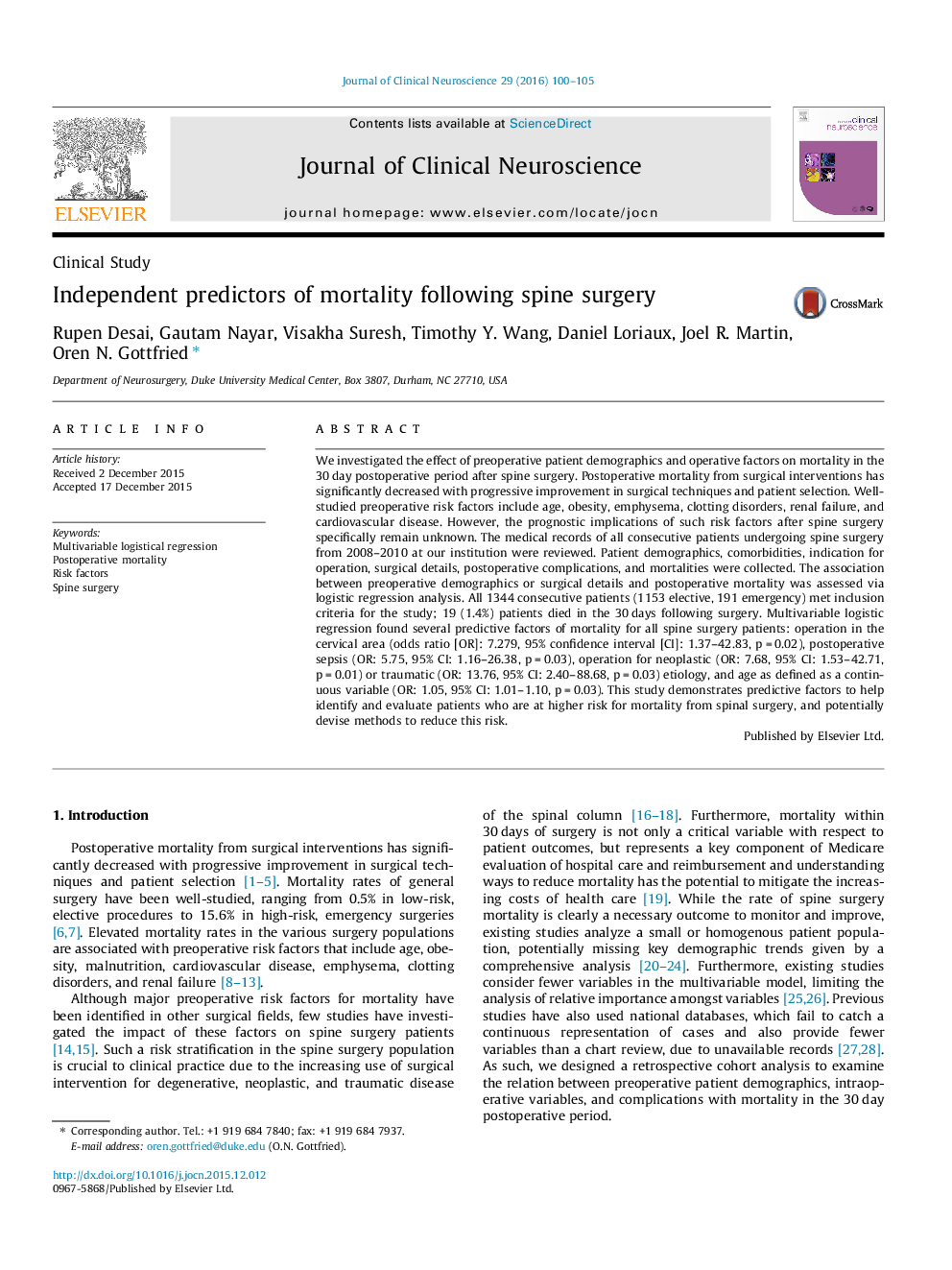| Article ID | Journal | Published Year | Pages | File Type |
|---|---|---|---|---|
| 3058418 | Journal of Clinical Neuroscience | 2016 | 6 Pages |
•C-spine surgery and age are associated with postoperative mortality.•Traumatic and neoplastic etiology are associated with postoperative mortality.•The rate of 30-day mortality following spine surgery is low, at 1.4%.•Spine surgery has a low complication rate.
We investigated the effect of preoperative patient demographics and operative factors on mortality in the 30 day postoperative period after spine surgery. Postoperative mortality from surgical interventions has significantly decreased with progressive improvement in surgical techniques and patient selection. Well-studied preoperative risk factors include age, obesity, emphysema, clotting disorders, renal failure, and cardiovascular disease. However, the prognostic implications of such risk factors after spine surgery specifically remain unknown. The medical records of all consecutive patients undergoing spine surgery from 2008–2010 at our institution were reviewed. Patient demographics, comorbidities, indication for operation, surgical details, postoperative complications, and mortalities were collected. The association between preoperative demographics or surgical details and postoperative mortality was assessed via logistic regression analysis. All 1344 consecutive patients (1153 elective, 191 emergency) met inclusion criteria for the study; 19 (1.4%) patients died in the 30 days following surgery. Multivariable logistic regression found several predictive factors of mortality for all spine surgery patients: operation in the cervical area (odds ratio [OR]: 7.279, 95% confidence interval [CI]: 1.37–42.83, p = 0.02), postoperative sepsis (OR: 5.75, 95% CI: 1.16–26.38, p = 0.03), operation for neoplastic (OR: 7.68, 95% CI: 1.53–42.71, p = 0.01) or traumatic (OR: 13.76, 95% CI: 2.40–88.68, p = 0.03) etiology, and age as defined as a continuous variable (OR: 1.05, 95% CI: 1.01–1.10, p = 0.03). This study demonstrates predictive factors to help identify and evaluate patients who are at higher risk for mortality from spinal surgery, and potentially devise methods to reduce this risk.
